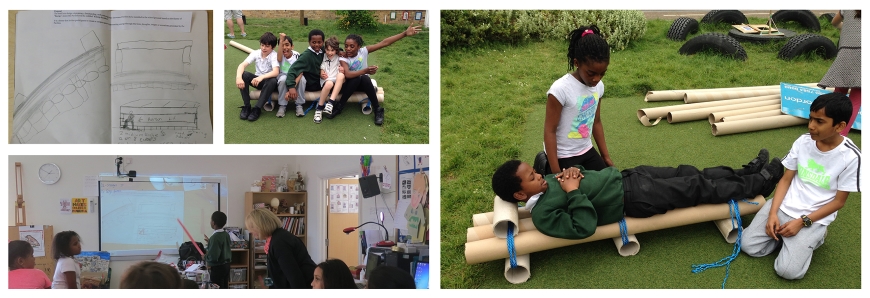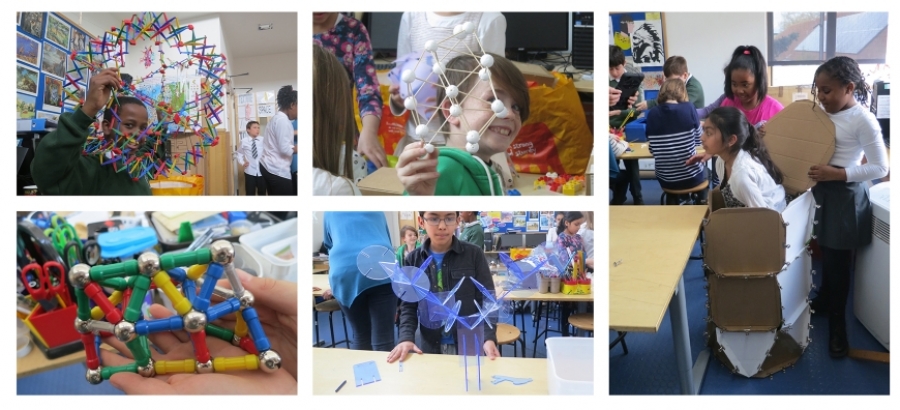Because the subject is seen as a novelty, it gives an opportunity to experiment and play with ideas, while still addressing many relevant areas of the National Curriculum and the school’s targets for child development. The architecture lessons draw connections between the artistic and cultural-based subjects, and technically-oriented subjects such as Maths and Science. The children apply their knowledge of these implicitly to their ideas and creations, and combine them into a single focus.

In this respect, where the process really takes off is when individual children see opportunities to achieve a goal which is very personal to them. Working outdoors, one exercise involved garden canes made up with eyelets at the ends so they could be connected with cable ties to make structures. The children investigated the different structures, enclosures and dens they could make with this system combined with sheets and boards. They looked at the pros and cons of different shapes and the structural benefit of triangles. One child came from a large family who all shared a small house. She saw an opportunity to create her own personal space in her back garden and took the entire kit home with her. I understand she spent a lot of the Summer out there. The experiments in the school courtyard were her prototype, combining technical issues of structure, material selection and shelter with cultural issues of spacial design and personal aesthetics.

With a selection of larger scale installations under construction, another child saw the opportunity to design and create a bench, which could be installed in each. It was important for him to be able to lie down and experience the environment of each pavilion, while being able to chill-out and observe the passing clouds. The bench design required the application of structural, material, aesthetic, and ergonomic considerations.

These experiments and lessons do demonstrate tangible and important links between Arts and technical subjects by application. Simply by identifying the differences, the relationships are highlighted and the children enjoyed making the connections, especially in the focus of a personal goal. Technical academic subjects might be objective, but life throws up many subjective variables. Building bridges in this way allows art and cultural subjects to support Technical subjects and fortify their importance in the National Curriculum. For those who consider themselves to be particularly technically minded, this process allows the student the opportunity to engage with their creative selves in ways they might never have known.
Do you teach via such activities? Let us know below!


















